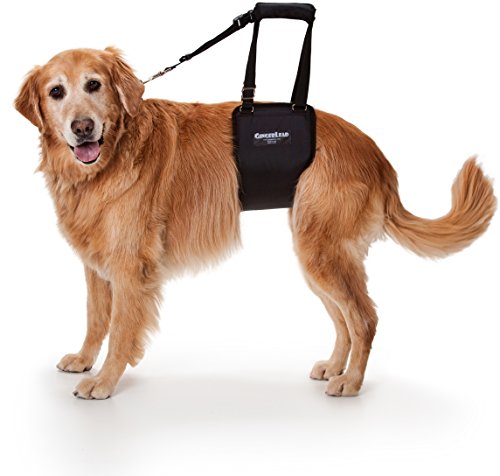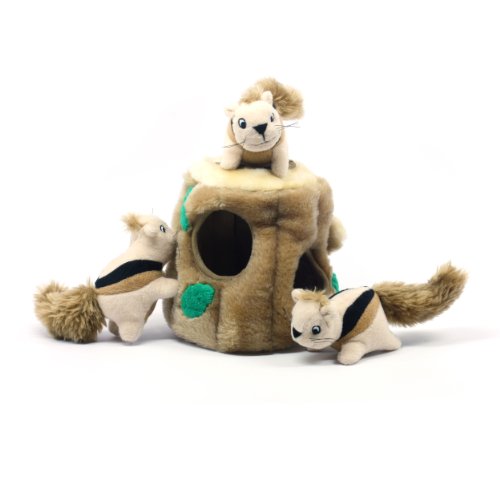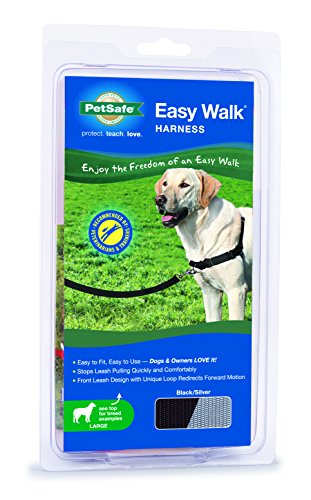
There are many reasons for a dog to have a sore leg. For example, it could have stepped on something sharp. If your dog looks like it is in pain, it is always a good idea to take it to the veterinarian to make sure there is nothing seriously wrong. One important cause of a sore leg is called “osteochondritis dissecans”. Osteochondritis dissecans (OCD) is a fairly common problem found in some large dogs (anything as big as or bigger than a border collie). The problem starts in the growing puppy, so the dog usually becomes sore when it is less than one year old. However, sometimes the signs are not severe at first and do not get noticed until the dog gets older.
OCD is a disease of joints. Joints are the fluid-filled spaces where the ends of bones meet (like your elbow, knee, and wrist). The bone ends are lined by cartilage cells (“articular cartilage”), which allow smooth movement of the joint. As a puppy with OCD gets older, for an unknown reason an area of articular cartilage does not mature properly. Normal articular cartilage is very thick in a puppy, and will gradually be replaced by bone as the dog matures until there is only a thin lining of articular cartilage cells at the ends of the bones. In OCD, there is an area of cartilage in the joint that is not replaced by bone and remains very thick.
This doesn’t cause a problem right away. But as the dog matures, this thick area of articular cartilage does not get enough blood supply. Without blood supply, it does not get nutrition and starts to die. The area begins to separate from the bone and form a flap of articular cartilage. In some cases the flap entirely separates from the bone and floats around in the joint fluid.
It may sound complicated, but the problem is clear; loose cartilage causes rubbing in the joint. This is painful! However, OCD is not painful until the cartilage flap forms. The dog then appears to be in pain especially after exercising. This is because exercising involves a lot of joint movement, allowing the flap to rub on the bone ends. Over months, the dog will gradually be in more pain. The flap begins to damage the normal articular cartilage and bone ends. The body reacts by causing the joint to swell and sends cells into the joint, which damages it even further. This process is called “degenerative joint disease”, which is basically the dog form of arthritis. Therefore, if left untreated, OCD may eventually cause arthritis.
When you bring your dog into the veterinarian, there will be a couple of steps that need to be taken before the diagnosis of OCD is made. First of all, it is a problem that is found in large, young dogs. It is almost never seen in cats or small dogs. It is normally found in the shoulder or elbow joint, or can less commonly be found in a back leg. To properly diagnose OCD, your veterinarian will take x-rays and will be able to see the problem area.
The treatment for OCD depends on how severe the problem is and which joint is affected. Some dogs will improve if they are prohibited from doing extreme exercise and are given anti-inflammatory drugs. However, this will not fix the problem and many of these dogs will get worse over time, as the joint damage increases.
Surgery for OCD is common. During the surgery, the joint is opened and the flap of cartilage is removed. This is a surgery that is usually done by a specialist (a board-certified surgeon). After the surgery, the dog must be strictly kept from exercising. This usually involves taking the dog for only very short walks on the leash. This is important because we want to decrease the amount of pressure put on the joint. With less pressure on it, the joint will heal faster. Surgery is fairly successful. Very often, the dog will develop mild arthritis in that joint as it ages. However, without treatment, a dog with OCD usually develops a more severe arthritis fairly quickly. Surgery is somewhat expensive, but it does provide your dog the chance to live a normal life soon afterwards.
OCD is problem found in some young, large dogs. It can be diagnosed by your veterinarian and treated with confidence. Always remember, if your dog develops a sore leg that doesn’t quickly get better, take it to your veterinarian. The sooner you diagnose a problem, the more likely it is that the treatment will be successful!
By Ashley O’Driscoll – Pets.ca writer
 Senior Dog Harness
There are many reasons that
Senior Dog Harness
There are many reasons that
 Dog Pregnancy
After a dog gives birth, mos
Dog Pregnancy
After a dog gives birth, mos
 Do You Deserve Your Dog?
Credit: sixninepix
Do You Deserve Your Dog?
Credit: sixninepix
 How to Exercise Your Dog: The Benefits and Tips For Exercise
Dogs Living In The Modern WorldFor centuries,
How to Exercise Your Dog: The Benefits and Tips For Exercise
Dogs Living In The Modern WorldFor centuries,
 How To Stop Dogs Pulling On The Leash
To Stop Dogs Pulling Takes P
How To Stop Dogs Pulling On The Leash
To Stop Dogs Pulling Takes P
Copyright © 2005-2016 Pet Information All Rights Reserved
Contact us: www162date@outlook.com